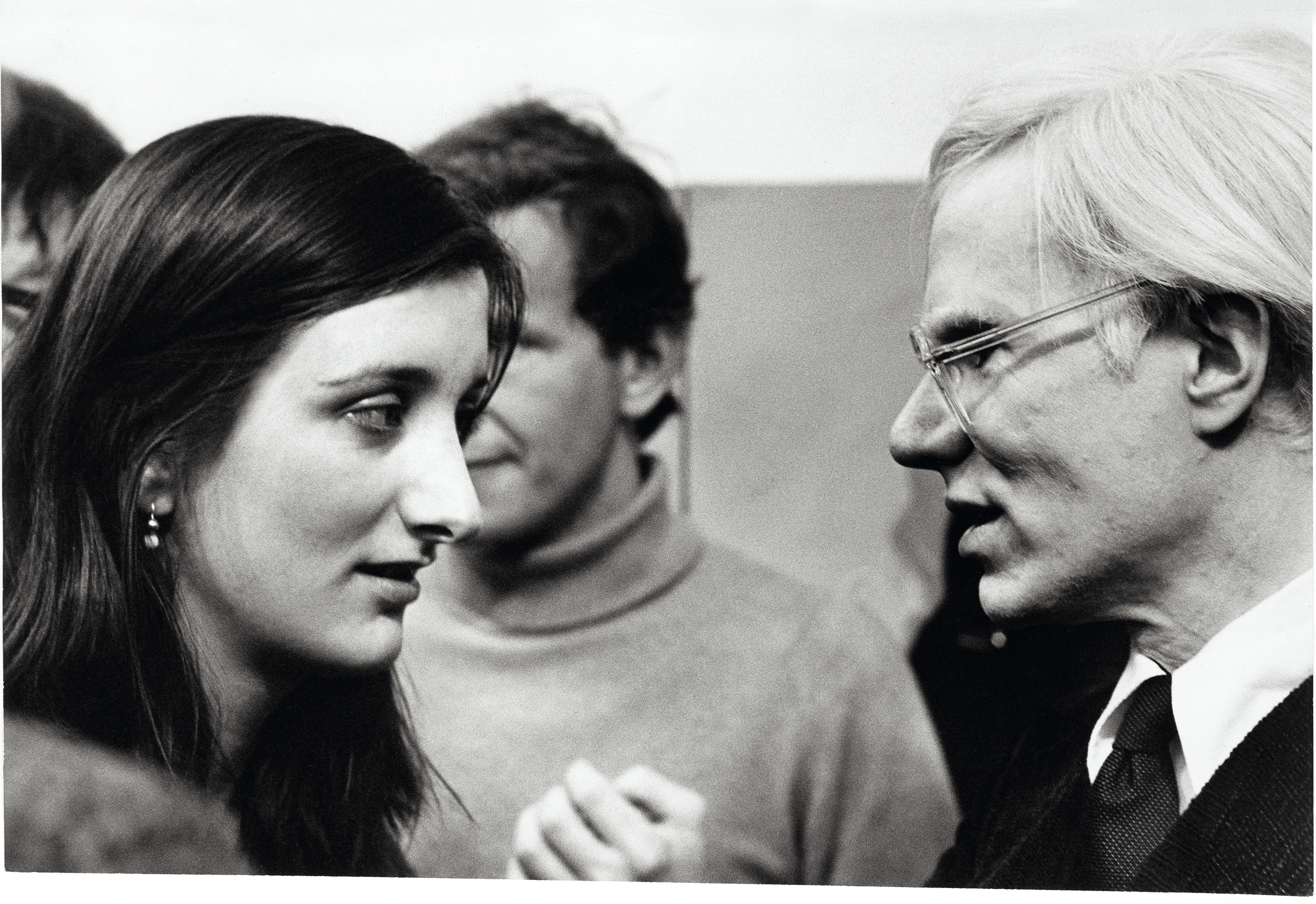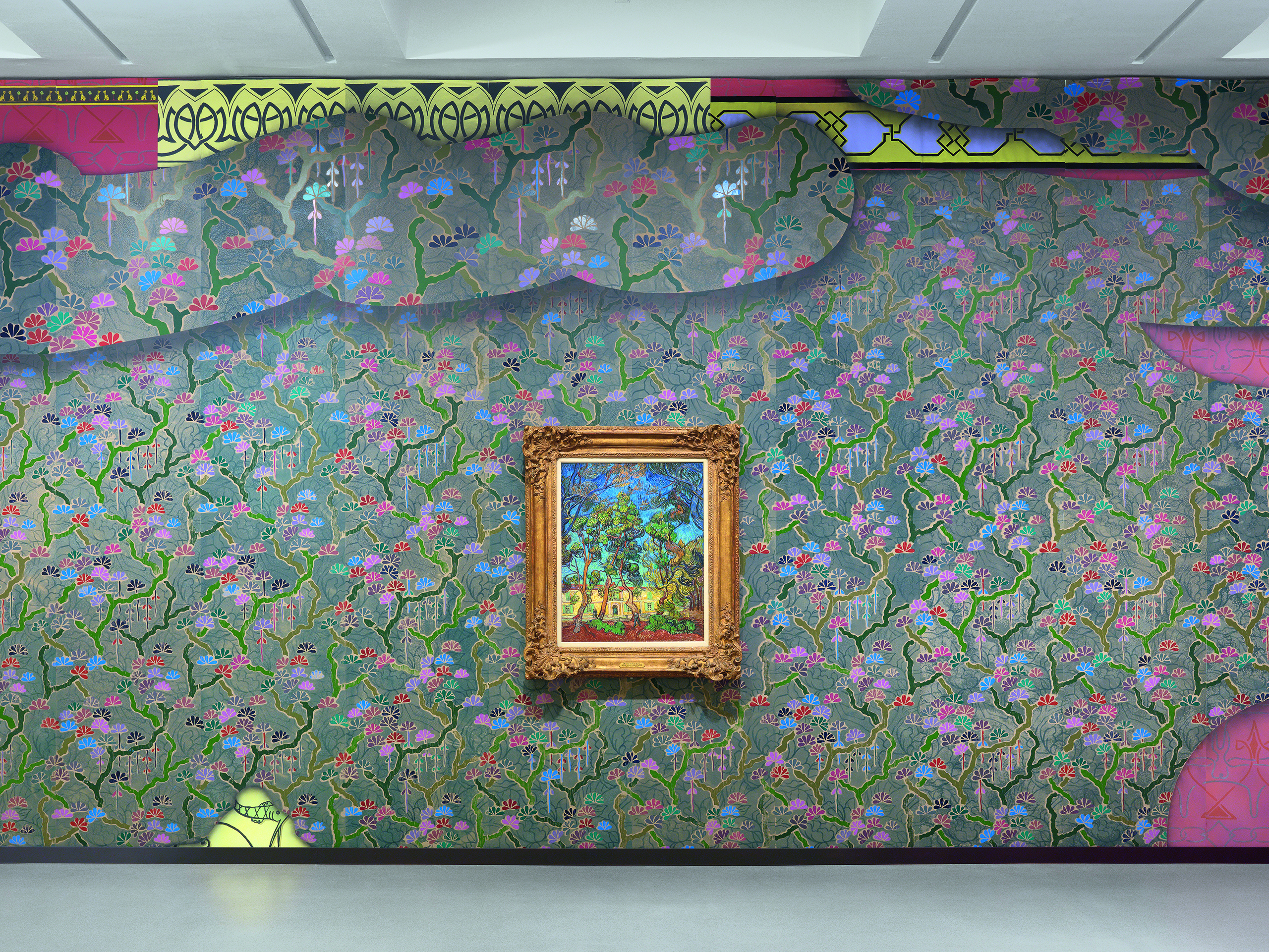
Curator Bice Curiger champions contemporary art

Bice Curiger is one of the most prolific curators in the Swiss art scene. Her copious creativity is testament to the success of contemporary art in Switzerland and internationally.
In 1998 a series of rockets and satellites covered in fluffy white cloth landed in the Kunsthaus museum in Zurich. First Spaceship on Venus, an installation by the Geneva artist Sylvie Fleury, alighted in one of the institution’s most prestigious collection galleries. The contemporary artist was displayed alongside the paintings of Johann Heinrich Füssli (1741-1825), a Zurich native also known as Henry Fuseli, who made his fame in Rome and London.
The ambitious show, organised in the Kunsthaus by the curator Bice Curiger, offered more than just an overview of Swiss artistic prowess in the 1990s. Fleury’s rockets and satellites, along with the works of almost one hundred other artists, proved that contemporary art had definitively conquered the hallowed halls of museums. Moreover, the very title of the exhibition was a programmatic declaration: Freie Sicht aufs Mittelmeer (A Clear View of the Mediterranean). It mimicked a slogan from the Zurich protest movement of 1980 “Down with the Alps – A Clear View of the Mediterranean,” thereby demonstrating the international trajectory of Swiss art.

Swiss artists in the spotlight
Bice Curiger played a pivotal role rendering contemporary Swiss art so visible. And not merely as a curator, but also as an editor and author. She never made a strict differentiation between these endeavours. “Whether I’m putting art across on the pages of a book or in a space, the work all merges together,” Curiger noted when I interviewed her for my book C is for Curator: Bice Curiger – Eine Arbeitsbiografie.
In 1984 Curiger founded the art journal Parkett, together with Swiss art historian Jacqueline Burckhardt, the publisher Walter Keller and New York gallery owner Peter Blum. She spent 33 years as Parkett’s chief editor. The journal appeared in English and German with the goal of connecting the European and American art scenes.
Parkett rose to become one of the most renowned international art magazines. It featured outstanding artists such as Louise Bourgeois, Sigmar Polke, Meret Oppenheim (the focus of Curiger’s first monograph in 1982), Fischli/Weiss, Bruce Nauman or Katharina Fritsch. The journal soon became required reading for many of those interested in contemporary art.

As the now internationally well-known curator Hans Ulrich Obrist recalls: “Back then the Parkett office was somehow the Headquarter Central of Contemporary Art – a contact and intersection point. For me as a teenager, it was a magnetic place, and I don’t think I’m the only one who felt about it like that. It was incredibly important for me that Bice later invited me to write a text for Parkett. The text effectively marks the starting-point of my international curatorial evolution.”
In 2011 Curiger was appointed director of the Venice Biennale. She was the first woman and the second Swiss person, after Harald Szeemann, to hold the position. Born in 1933, Szeemann coined the concept of a “free” curator or exhibition-maker. Curiger, born in 1948, belonged to the next generation, which pushed the idea forward. Curiger, for instance, did so by showcasing many more artists than the whiskered Bern native.
From Pop Art to Zurich underground
Curiger developed a passion for contemporary art early on. As a teenager she was fascinated by Pop Art. But current art forms were not part of the programme when she studied art history at university in Zurich in the 1970s.

Taking the advice of a fellow student, she began writing art critiques for the Tages-Anzeiger. She found rich material in the Zurich underground that brought together art students with an adventurous sense of experiment, writers and all kinds of bon vivants. In the bars of Zurich’s old town, she mingled with kindred spirits and found a forum for artistic exchange.
In 1975, together with other women, she organised the exhibition Frauen sehen Frauen (Women See Women) in the Strauhof in Zurich. The show was not merely an art exhibition: women’s experiences were presented, analysed and satirised by female artists, students and sociologists, but also by the glamorous prostitute Lady Shiva. Frauen sehen Frauen was a collective endeavour. Then, in 1980, Curiger organised her first solo exhibition: Saus und Braus (Living It Up). The exhibit focused on the Zurich scene and boasted the first joint appearance by the artists Peter Fischli and David Weiss, who displayed their 1979 Wurstserie (Sausage Series).
Rewriting art history
In 1992 Curiger became a curator at the Kunsthaus. While there, she started showcasing contemporary art alongside works from much earlier periods, thereby narrating a different kind of art history. At an art critics’ symposium in Tiflis in 1989, she chanced upon the Georgian painter Niko Pirosmani, scarcely known at the time in the West.
Whilst other art critics blithely strolled past the paintings of the autodidact during a museum tour, she was transfixed by the force of Pirosmani’s paintings and sensed their untapped potential. The exhibition Zeichen und Wunder – Niko Pirosmani (1862–1918) und die Kunst der Gegenwart (Sign and Wonder – Niko Pirosmani… and the Art of the New) contained 1,995 paintings by the Georgian artist alongside other works, including by kitsch neo-pop American sculptor Jeff Koons and German visual artist Katharina Fritsch.

Deftig Barock (Hefty Baroque) presented 2,012 paintings from the Baroque era together with pieces of contemporary art, offering fresh perspectives on both artistic movements. ILLUMINazioni, the title of the Venice Biennale curated by her, featured three paintings by the Venetian painter Giacopo Tintoretto (1518–1594) from the Mannerist period.
In 2013 Curiger was named artistic director of the newly founded Fondation Vincent van Gogh Arles. Here too, she pursued her aim of creating a vibrant space, finding innovative ways to juxtapose van Gough’s classics to contemporary creations. Her exhibitions are sensuous, precise, but never didactic. Then, as now, her inspiration is critically crafted by an intimate exchange with the artists, whom she describes as her nectar.

Contemporary art conquers the world
Not to be ignored is the fact that Curiger’s career coincides with a period in which the art universe underwent a radical transformation. The arts are now a global business – museums of contemporary art have spread across the globe. When writing Curiger’s biography, I found it important to not only do justice to the achievements of a female curator – amongst all the male curator heroes – but to also illuminate the overall context of Curiger’s creative accomplishments.

The success of contemporary art, in which Szeemann and Curiger played a role, came at a price. Among the unintended consequences: the growing emphasis on revenue and museum visitor numbers, the demise of art criticism in newspapers. Curiger, always the sharp observer of art world dynamics, questioned the role of artists, art criticism and museums. In a 2020 exhibit, she flagged the problematic trendlines with a challenging question: “Is art too much caught in the stranglehold of commerce and professionalization? We are all part of one huge industry.” Nevertheless, she remains convinced that art still has the potential for resistance and the power to see what exists and is ostensibly self-explanatory anew.
“One has to stay alert and attentive to perceive the miraculous connections and correlations suggested by Bice in her exhibitions,” notes Swiss artist Thomas Hirschhorn. “Her shows are a rallying cry and a challenge to encounter art using all your senses, to express yourself, yet at the same time to retain your sovereignty and your own view of things.”
Dora Imhof, C is for Curator: Bice Curiger – Eine Arbeitsbiografie (Verlag der Buchhandlung Walther und Franz König, Cologne, 2022), 404 pages with numerous illustrations.
Translated from German by Thomas Skelton-Robinson, edited by Dominique Soguel

In compliance with the JTI standards
More: SWI swissinfo.ch certified by the Journalism Trust Initiative































You can find an overview of ongoing debates with our journalists here . Please join us!
If you want to start a conversation about a topic raised in this article or want to report factual errors, email us at english@swissinfo.ch.